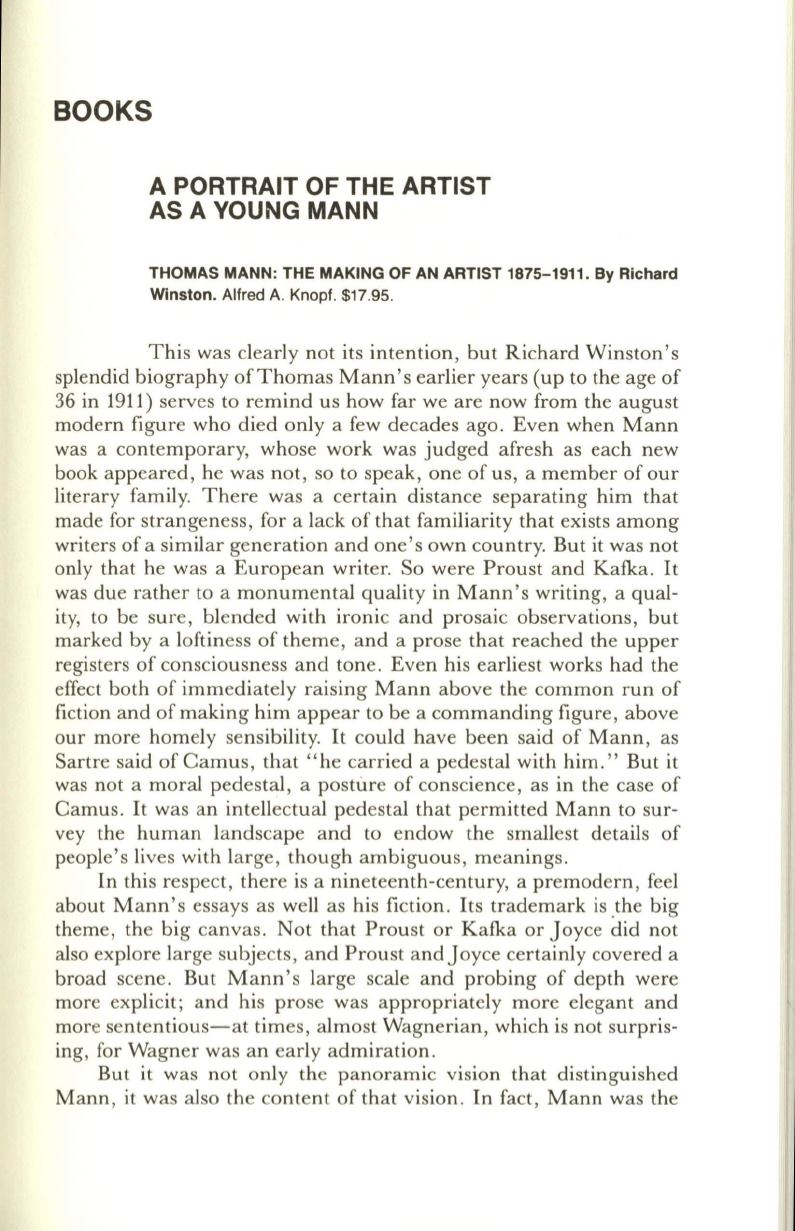
BOOKS
A PORTRAIT OF THE ARTIST
AS A YOUNG MANN
THOMAS MANN: THE MAKING OF AN ARTIST 1875-1911 .
By
Richard
Winston.
Alfred A. Knopf. $17.95.
This was clearly not its intention, but Richard Winston's
splendid biography of Thomas Mann's earlier years (up to the age of
36 in 1911) serves to remind us how far we are now from the august
modern figure who died only a few decades ago. Even when Mann
was a contemporary, whose work was judged afresh as each new
book appeared, he was not, so to speak, one of us, a member of our
literary family. There was a certain distance separating him that
made for strangeness, for a lack of that familiarity that exists among
writers of a similar generation and one's own country. But it was not
only that he was a European writer. So were Proust and Kafka.
It
was due rather to a monumental quality in Mann's writing, a qual–
ity, to be sure, blended with ironic and prosaic observations, but
marked by a loftiness of theme, and a prose that reached the upper
registers of consciousness and tone. Even his earliest works had the
effect both of immediately raising Mann above the common run of
fiction and of making him appear to be a commanding figure, above
our more homely sensibility. It could have been said of Mann, as
Sartre said of Camus, that "he carried a pedestal with him." But it
was not a moral pedestal, a posture of conscience, as in the case of
Camus.
It
was an intellectual pedestal that permitted Mann to sur–
vey the human landscape and to endow the smallest details of
people's lives with large, though ambiguous, meanings.
In this respect, there is a nineteenth-century, a premodern, feel
about Mann's essays as well as his fiction. Its trademark is .the big
theme, the big canvas. Not that Proust or Kafka or Joyce did not
also explore large subjects, and Proust and Joyce certainly covered a
broad scene. But Mann's large scale and probing of depth were
more explicit; and his prose was appropriately more elegant and
more sententious-at times, almost Wagnerian, which is not surpris–
ing, for Wagner was an early admiration.
But it was not only the panoramic vision that distinguished
Mann, it was also the content of that vision. In fact, Mann was the


